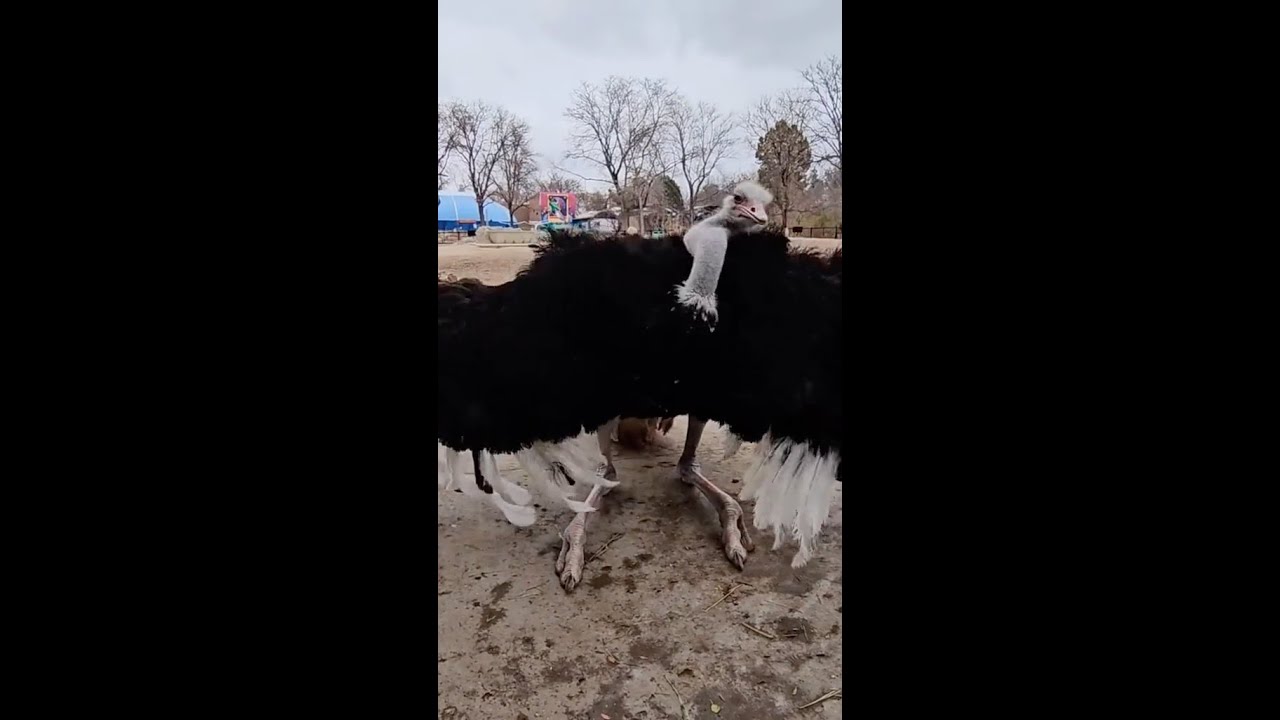– The biological characteristics of ostriches and their natural behaviors
– Ethical considerations and animal welfare in zoo management
– Dancing with Dusty: Exploring the impact of interactive animal experiences
– Wildlife conservation efforts for ostriches and their habitats
– The role of education in fostering wildlife appreciation and stewardship
Ostriches are largely recognized for their distinctive physical appearance and unique adaptations. As the world’s largest bird, the ostrich (Struthio camelus) has evolved with several peculiar traits that suit its savannah habitat. Unable to fly, they have developed powerful legs capable of reaching up to 45 miles per hour, making them the fastest two-legged animals on land. These legs also serve as formidable weapons, equipped with claws that can deliver serious injury to potential predators.
The ostrich is an example of how specific species have adapted to their environment through evolution. Their large eyes, approximately the size of billiard balls, provide them with keen eyesight to spot threats from afar. Conversely, the common myth that ostriches bury their heads in the sand when frightened is purely fictional; in reality, they lay their heads on the ground to avoid detection. The ostrich’s diet is equally fascinating, comprising plant matter, insects, and small vertebrates, and thanks to their robust digestive system, they can consume items other animals cannot, including pebbles that aid in grinding food internally.
In zoos, the focus on animal welfare has become increasingly imperative. Zoos provide environments that closely mirror animals’ natural habitat, contributing to their physical and psychological well-being. A detailed enrichment program is essential to maintain the health and happiness of species like Dusty, the ostrich. Enrichment in zoo environments can take various forms, from introducing new objects to explore, changing feeding routines to encourage foraging behaviors, or, as in Dusty’s case, interactive experiences that stimulate physical activity and social engagement.
Dancing with Dusty highlights the importance of enrichment activities in zoo habitats. Through such interactive experiences, ostriches like Dusty are encouraged to engage in natural behaviors, providing exercise and mental stimulation. These experiences also educate visitors on these fascinating birds‘ natural movements and behaviors. However, while beneficial, zoo staff must always monitor these activities to ensure they remain stress-free and enjoyable for the animals.
Conservation is another critical aspect of Dusty’s life in captivity. As human activities increasingly threaten wild habitats, zoo-bred animals like Dusty serve as ambassadors for their species, highlighting the importance of preserving the ecosystems they come from. Conservation programs often use captive breeding to maintain genetic diversity and potentially reintroduce animals into protected wild environments. Ostrich populations have declined in certain areas due to overhunting and habitat loss, making conservation programs integral to their survival.
Lastly, the value of education in zoos cannot be overstated. By showcasing animals like Dusty, zoos facilitate a deeper understanding and appreciation of wildlife among the public. Educators can leverage the curiosity piqued by Dancing with Dusty to dispense vital information on ostrich behavior, ecology, and the broader concepts of biodiversity and conservation. It’s a proactive way of nurturing a society that values and actively participates in the stewardship of our natural world.
In delving into the life of an ostrich, we’ve briefly explored the specialized adaptations that enable them to thrive in their natural environments, emphasizing the importance of replicating natural behaviors even in captivity. Beyond the joy Dancing with Dusty brings spectators, the experience serves a greater purpose in wildlife education and the endorsement of conservation efforts. As we continue to evolve our understanding and capabilities in zoo management and wildlife stewardship, stories like Dusty’s remind us of our role in safeguarding the intricate tapestry of life on Earth.
*****
Source Description
It’s going to be… Dusty!
Today’s a big day for fans of boy bands, Dusty and the month of May! With Down Under opening at the end of the month, new animal arrivals and babies, now’s the time to become a Denver Zoo member! Join today for 15% off and join in the excitement! Join now: https://link.denverzoo.org/3UI2CoX.
One way our animal care team helps keep our animals mentally stimulated is with auditory enrichment, which can include various sounds, noises or even music. When playing music enrichment for Dusty, his care team realized he had a fondness for dancing to different types of music, including everyone’s favorite boy band, NSYNC. While male ostriches do this dance as part of courtship, Dusty also dances when he’s excited, whether from music or spending time with his favorite people!
Video Credit: Animal Care Specialist Christa K.

